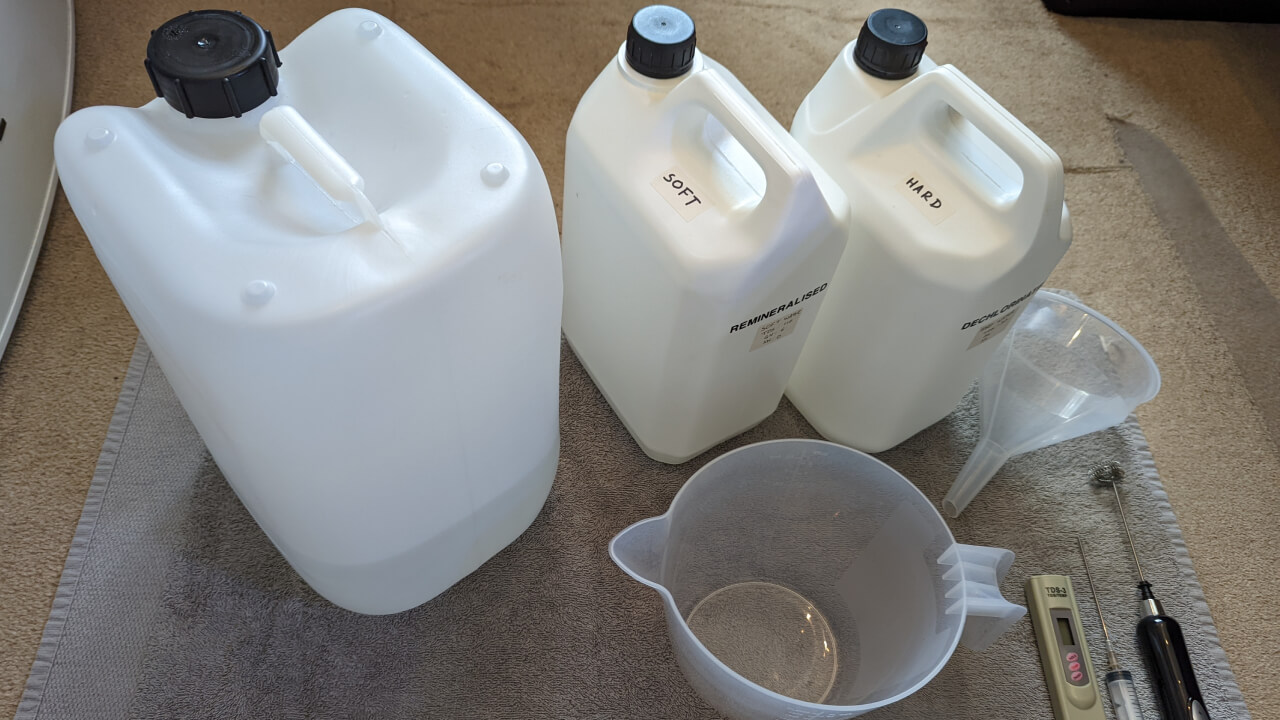Remineralizing your own shrimp tank water is an easy way to make the perfect water parameters.
Your shrimp will love the stability, and you’ll minimize any trouble with molting.
It’s highly recommended to prepare your own water for Caridina shrimp, instead of using tap water, as they’re more sensitive.
What TDS do you want?
The TDS (Total Dissolved Solids) you’ll want depends on which mineral salt you’re using, and your shrimp species’ preferred hardness.
Reverse Osmosis (RO) or distilled water should ideally have a TDS of zero to start with.
This makes it easy to tell when we’ve hit our General Hardness (GH) and Carbonate Hardness (KH) targets.
Hardness is normally measured in degrees (dGH), with 1 dGH equal to 17.8ppm.
Measuring GH and KH is more important than TDS
Focus on getting the right general hardness and carbonate hardness parameters over a specific TDS.
The TDS measurement quickly gives you a rough idea, but isn’t too helpful by itself.
How to dose Salty Shrimp Mineral GH+
Assuming you’ve got a target of 6 GH for a Bee shrimp tank, calculating the TDS is fairly simple.
If the mineral salt was purely calcium and magnesium, you’d just multiply the desired GH by 17.8ppm, and get 106ppm as your TDS target.
However, as there are a few other elements in the remineralizer, you’ll find 1 dGH is closer to 20ppm.
This means you’ll need to calculate 6 GH x 20ppm, and get a TDS goal of 120.
The chart and table below shows roughly what TDS you need for a certain GH level.
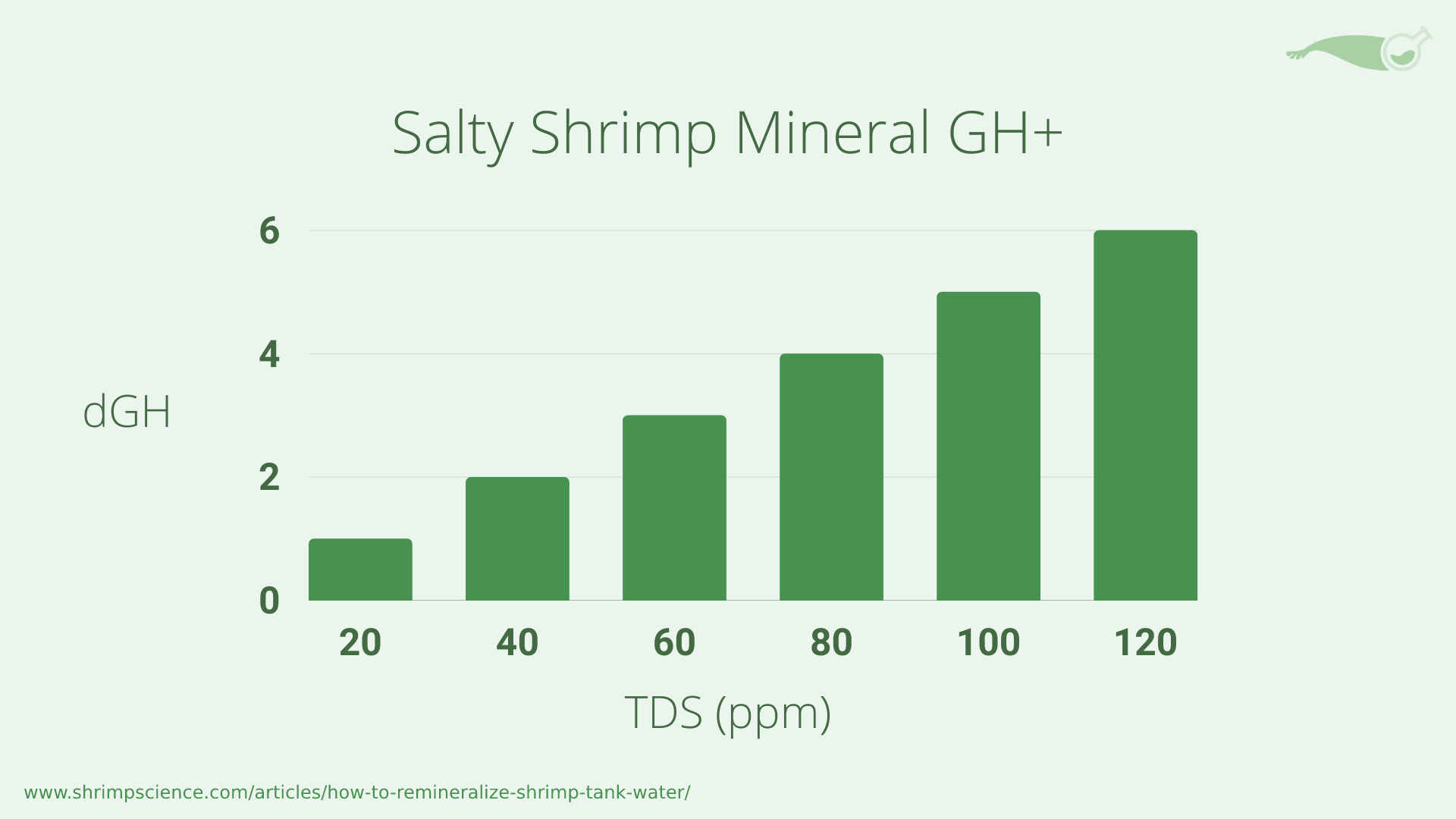
| TDS | dGH |
|---|---|
| 20 | 1 |
| 40 | 2 |
| 60 | 3 |
| 80 | 4 |
| 100 | 5 |
| 120 | 6 |
How to dose Salty Shrimp Mineral GH/KH+
Similar to the GH+ version, this type also includes some KH to buffer your water.
This is the recommended type of remineralizer for Neocaridina shrimp. Bee shrimp prefer low KH water, and their buffering substrate can expire faster if you use water with a higher KH.
This salt contains minerals for GH and KH at a ratio of 2:1, meaning with a GH of 2, you’ll also have a KH of 1.
Using the same example goal of 6 GH, this mineralizer will also raise the KH to 3.
As this mineralizer contains both GH and KH, it makes the TDS calculation a little more complicated.
You now need to have a TDS of roughly 30 ppm to reach 1 GH, and 0.5 KH. This is because of the 2:1 ratio, about one third of the TDS is now the carbonate hardness.
Using a TDS of 32ppm per 1 dGH will be more accurate than 30ppm, as the salt isn’t purely made up of KH and GH minerals.
The chart and table below shows a rough idea of how the TDS converts to GH and KH levels.
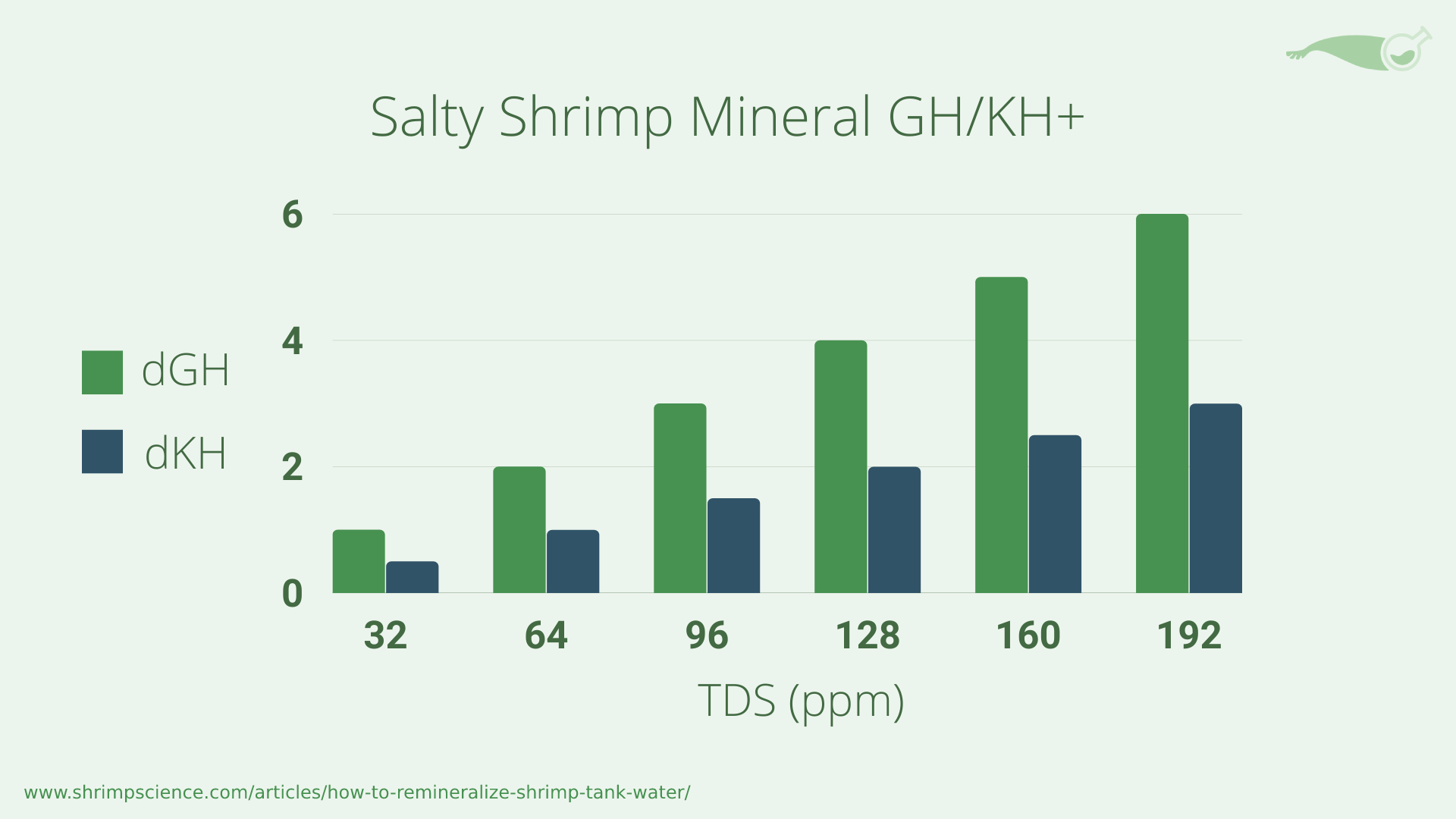
| TDS | dGH | dKH |
|---|---|---|
| 32 | 1 | 0.5 |
| 64 | 2 | 1.0 |
| 96 | 3 | 1.5 |
| 128 | 4 | 2.0 |
| 160 | 5 | 2.5 |
| 192 | 6 | 3.0 |
Mixing methods
The basic method
The official instructions for Salty Shrimp GH+ say that in order to get to 6 GH, you should use one even spoonful (3 grams) for every 20 litres of water.
However, I’d highly recommend you dose less than this to start with, something like half the suggested amount. It’s easier to add more minerals later than to keep diluting.
- Collect some RO or distilled water
- Measure and add in the mineral salt
- Mix until it’s all dissolved
- Measure the TDS is in the right range
This can be a bit difficult with small volumes of water. For example, making 2 litres only needs 0.3g of mineral salts.
Getting a small jewellery weighing scale is a great way to measure these tiny doses.
It might take a while for all the particles to dissolve, and your TDS may slowly climb while it’s still dissolving.
This is why it’s a good idea to wait and let it completely dissolve before putting it in your shrimp tank. The water may also be cloudy for a few minutes until the minerals dissolve or settle at the bottom.
Preparing a mineral squash helps to avoid these issues.
Making a mineral squash
Instead of mixing in a small amount of powder each time, I mix up a small bottle of very high strength remineralized water.
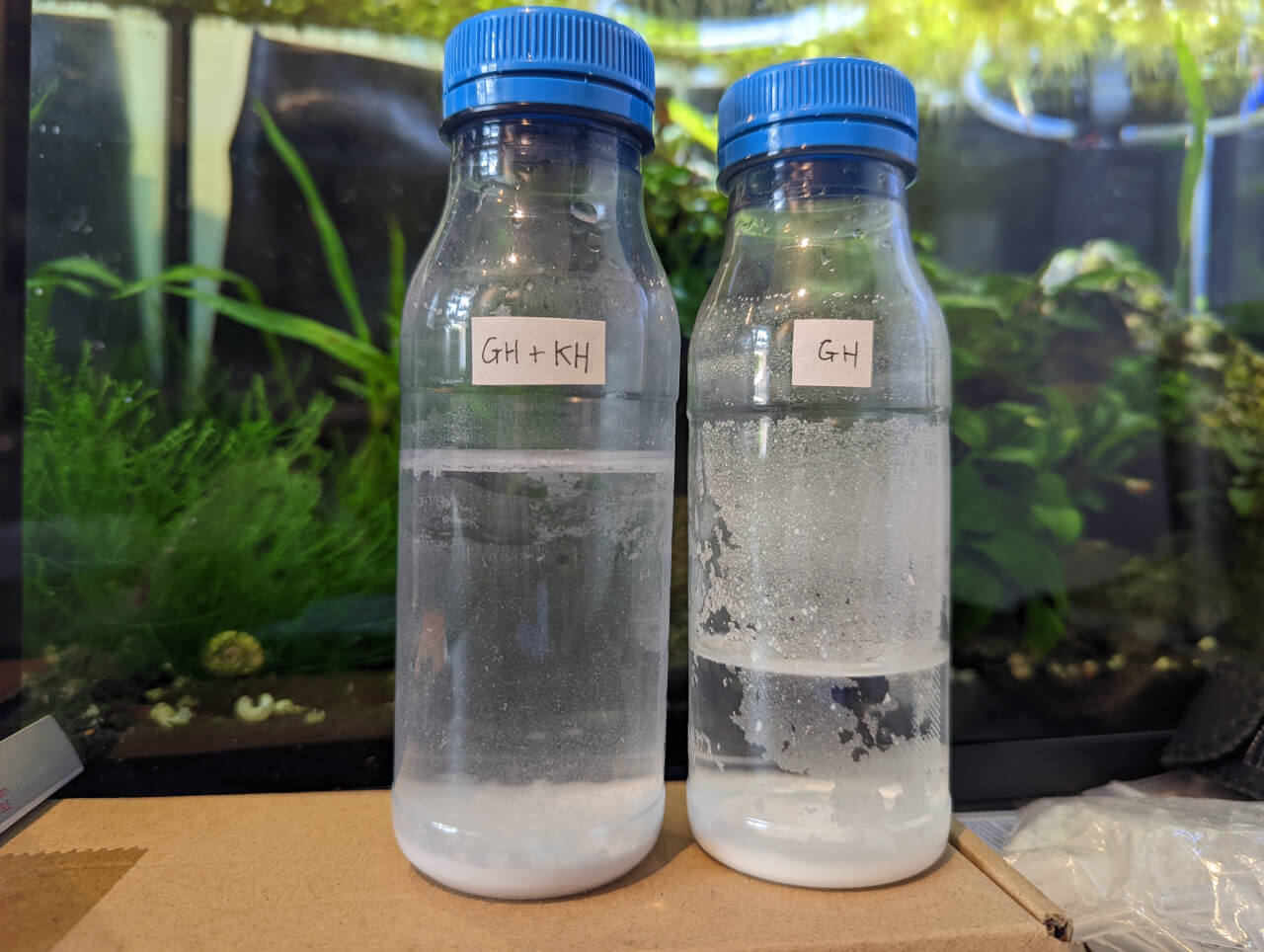
I call it a squash as it’s like a fruit squash you dilute with water to drink. Obviously, you don’t want to drink this one, though.
I then use a small syringe to take out a tiny amount and dilute it into a large jug of RO water.
Having the squash available and made earlier, gives the salt plenty of time to dissolve. This helps keep the mixed water clear, and prevents the TDS creeping up.
When scooping a spoon of the salt into the water, some particles may take a while to dissolve. This can make your TDS and hardness levels climb higher than you wanted.
- Collect some RO or distilled water in a small bottle
- Scoop in a few spoons of mineral salt
- Shake the bottle well
- Wait for any dusty particles to settle at the bottom
Use a syringe to put tiny amounts of the squash into your jug of RO water. I’d suggest starting with only a few ml at a time to avoid going way past your target.
Stir the squash into the jug of water, and check your TDS is close to what you’re aiming for.
Tips for mixing water
Use a milk frother
A milk frother is a great way to quickly mix up your water.
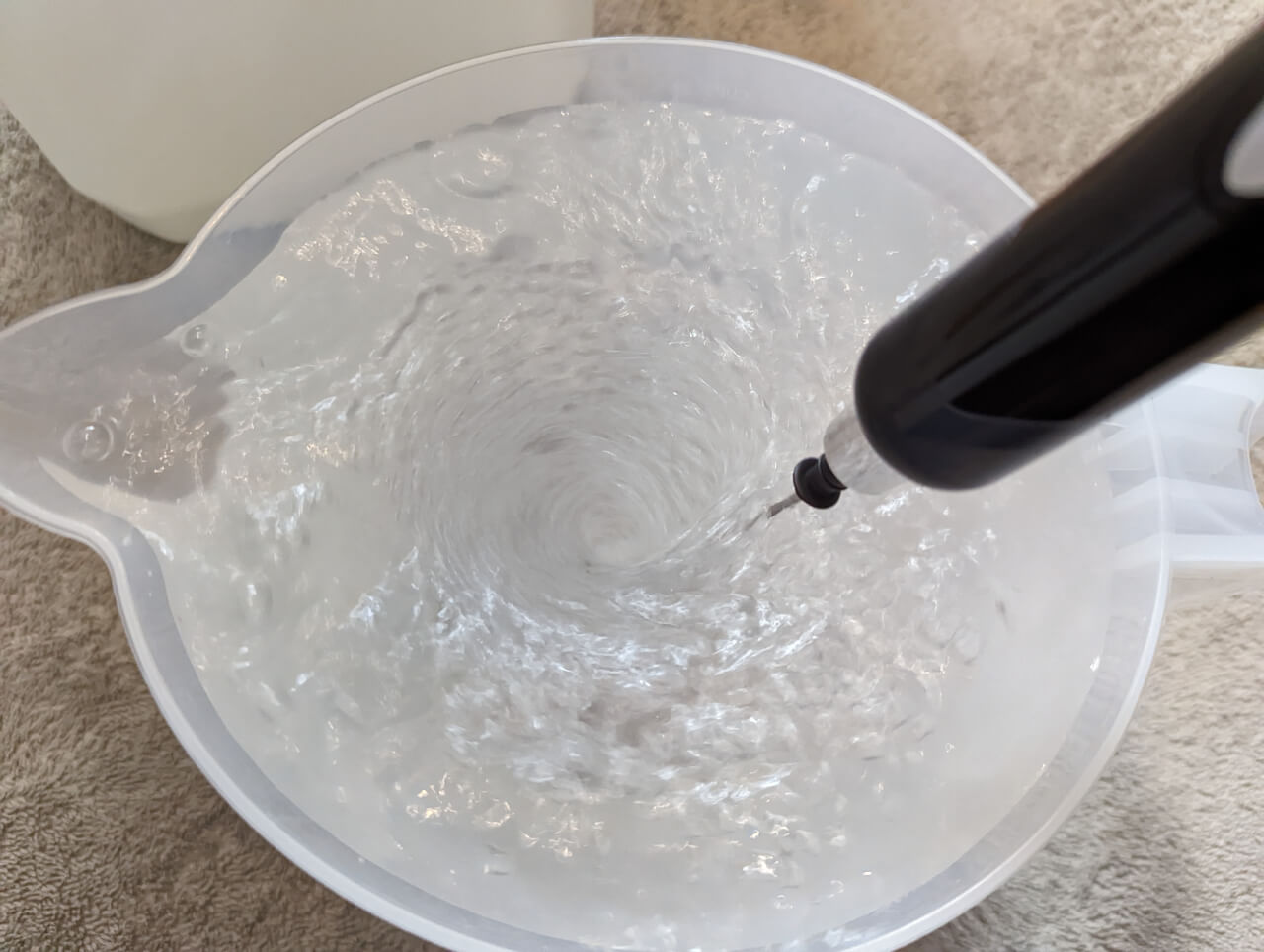
The minerals will dissolve faster with the water movement, and you’ll get an accurate TDS reading sooner.
Prepare the water before you need it
Get a few canisters or big bottles to hold some premixed water.
Having the water mixed before you need it gives the minerals loads of time to fully dissolve. The water will also have plenty of time to adjust to room temperature and reduce any stress on your shrimp with water changes.
It can also be incredibly handy to have the perfect water ready to go in an emergency. For example, if you need to quickly set up a quarantine tank, or deal with a sudden ammonia spike.
When should you mix your own water?
You can mix your own water whenever you like, but it’s much more useful for Caridina shrimp tanks. These shrimp are more sensitive to parameters than their Neocaridina cousins.
Neocaridina shrimp can also thrive in remineralized water, as well as plain old tap water. Making your own water will give you much more stable parameters, though.
Generally, it’s a fantastic idea to mix your own shrimp tank water if you have the patience for it. You’ll have complete control over the GH and KH, keeping your shrimp healthy and happy.

